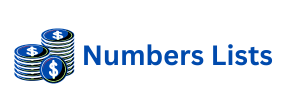Content writing is much more than just putting words on a page. It involves a deep understanding of how search engines work. Optimizing content for user intent is crucial. This is where Semantic SEO comes into play. It helps search engines understand the full context of your content. Semantic SEO moves beyond simple keyword matching. It focuses on the relationships between entities. It ensures your content addresses user questions comprehensively. This approach leads to higher rankings. It also provides a better user experience. Crafting content with semantic principles in mind is essential. It aligns with how modern search algorithms process information. This method ensures your topics are covered fully. It also helps in building authority online.
Understanding Semantic SEO for Effective Content Writing
Semantic SEO is about meaning and context. It helps search engines grasp the nuance of your subject. Instead of single keywords, it considers topic clusters. It looks at related concepts and user intent. Google’s algorithms are now highly sophisticated. They understand language like humans. Semantic SEO anticipates what users want. It provides comprehensive answers. Entity recognition is key here. Search engines identify specific people, places, or things. Your content should cover these entities thoroughly. This builds topical authority. It tells search engines you are an expert. This leads to better visibility. It also improves search rankings. Think beyond exact phrases. Focus on the broader topic. Cover all relevant subtopics. This holistic approach strengthens your content’s power.
The Foundational Role of Backlinks in SEO Strategy
Backlinks are crucial for search engine optimization. They are links from other websites to yours. Search engines view them as votes of confidence. Each quality backlink signals authority. It shows your content is valuable. This trust helps improve your site’s ranking. Not all backlinks are equal, however. Links from reputable, relevant sites are best. They pass significant “link equity.” This enhances your domain authority. Building a strong backlink profile takes time. It requires creating exceptional content. Other sites will then want to link to it. High-quality backlinks are a cornerstone of SEO. They drive organic traffic. They also reinforce your online credibility.
The absence of strong backlinks can hinder visibility. Even great content needs promotion. Backlinks help distribute your content. They show its relevance to search engines. Focus on earning natural links. Avoid spammy or artificial link schemes. These can harm your SEO. Instead, strive for genuine endorsements. These come from valuable, shareable content. Backlinks are a long-term investment. They contribute significantly to sustained growth. A robust backlink strategy supports your content’s goals.
Creating Linkable Assets for Organic Backlink Acquisition
Earning backlinks requires strategic content creation. You need “linkable assets.” These are pieces of content so valuable they attract links naturally. Examples include in-depth guides and original research. Infographics and data studies also work well. Tools, templates, and comprehensive resources are highly shareable. Your content must solve a problem. It needs to offer unique insights. It should be the definitive resource on a topic. Quality is paramount for attracting links. Content must be well-researched and accurate. It should be engaging and easy to understand. Visuals often enhance linkability. They make content more appealing. Promote your best content actively. Share it on social media. Reach out to influencers. Offer unique value. This encourages natural linking. Over time, these efforts pay off. You build a strong backlink profile. This strategy is sustainable. It yields lasting SEO benefits.
Optimizing Internal Backlink Structures for Site Authority
Internal backlinks are links within your own website. They connect different pages of your site. These links are vital for SEO. They help search engines discover new content. They also distribute link equity across your site. This means authority flows from stronger pages. It boosts the ranking potential of weaker pages. A well-planned internal linking structure is key. It improves user navigation. Visitors can easily find related content. This enhances their experience. It keeps them on your site longer. Use descriptive anchor text. This tells users and search engines about the linked page. Avoid generic phrases like “click here.” Instead, use relevant keywords. This supports your Semantic SEO efforts. It clarifies content relationships. Internal links are fully within your control. You can optimize them anytime. They strengthen your entire website’s authority.
Strategic Internal Backlink Implementation for Content Hubs
Implementing internal backlinks strategically is crucial. Think of your website as a network. Internal links create pathways within this network. A common strategy involves content hubs. These are cornerstone pages on broad topics. They link to many detailed sub-pages. These sub-pages then link back to the hub. This creates a strong topical cluster. It signals to search engines your expertise. This structure enhances crawlability. Search engine bots can easily navigate your site. They discover all your valuable content. This boosts the visibility of individual pages. Use a logical hierarchy for your links. Link deeply into your site’s content. Don’t just link to top-level pages. This distributes authority more effectively. Regular audits of your internal links are beneficial. Ensure no broken links exist. Update anchor text for relevance. This ongoing effort maintains SEO health. It ensures maximum impact from your content. Strong internal linking is a powerful SEO tool.
